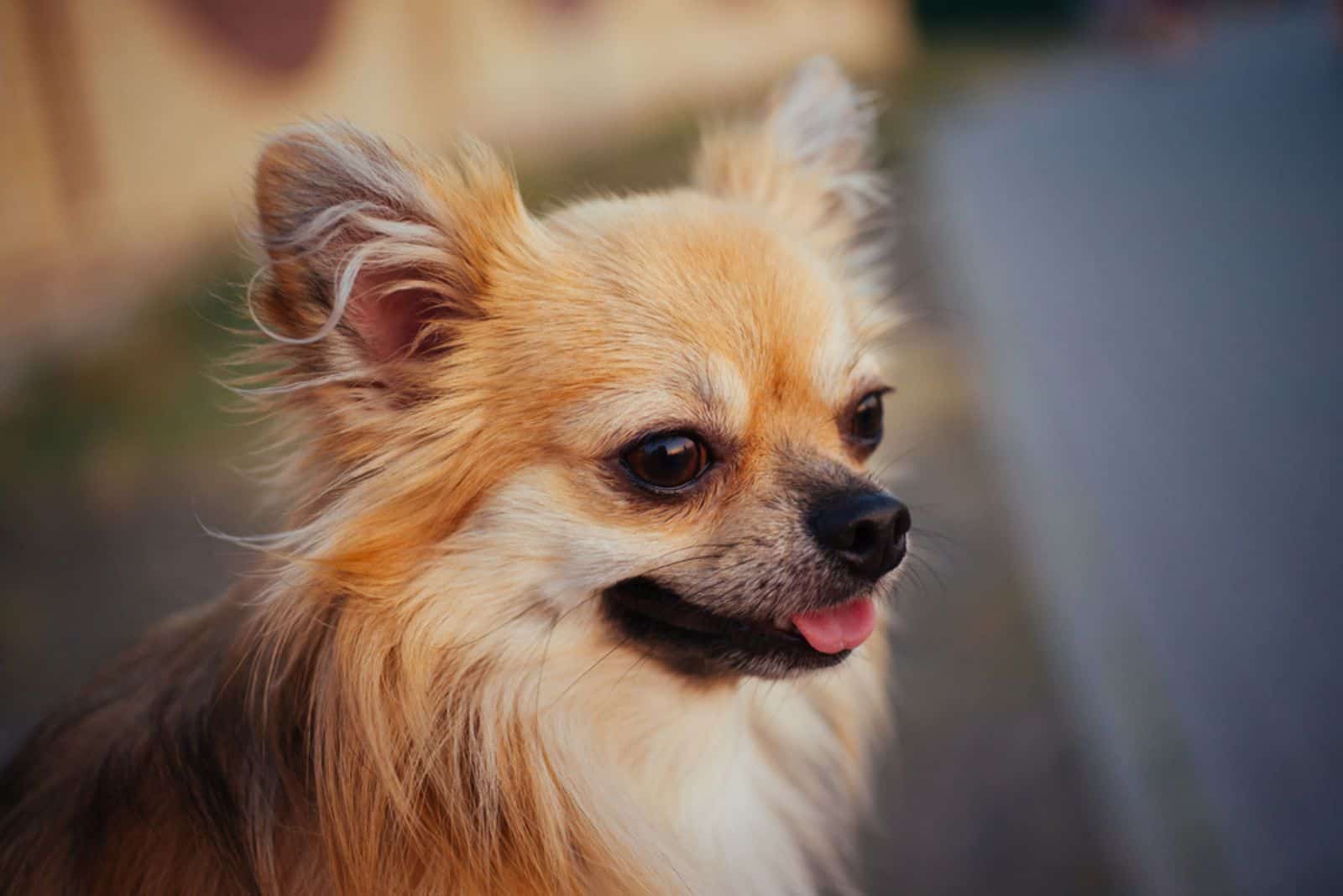Many sites love to add a one upper to whatever other sites list. Here at Pupvine, we do not do such things. Our goal is to give you the right information, not to make you read more than you require.
In the market for a Chihuahua? Good choice. The hype around this dog breed is real and they make great home and “take away” companions. There are six unique types of Chihuahuas to choose from, and I will make it a tough choice for you.
The main differences will be physical and based on major features such as head shape and coat quality. Uncertified sources claim that there are temperament distinctions too. Since we only deal with facts here, no hearsay is allowed.
Different Types Of Chihuahuas Have Various Powers
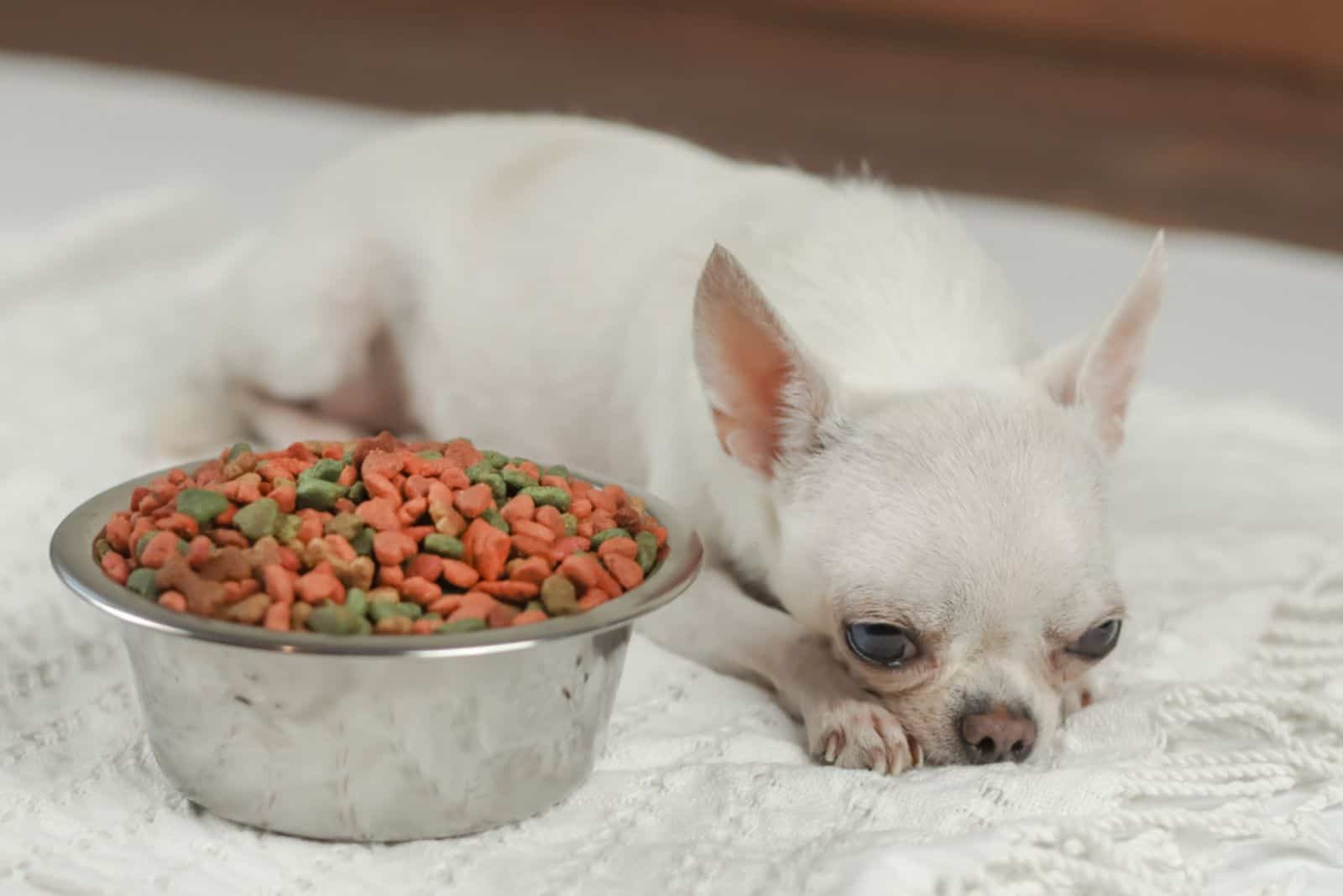
In reality, there are six types of Chihuahuas: apple head Chihuahua, deer head Chihuahua, teacup Chihuahua, long-haired Chihuahua, short-haired Chihuahua and pear head Chihuahua.
Fawn Chihuahuas are not a type, they simply have a specific coat color inherited from parents that could have been any of the types mentioned above. The color is recognized by the American Kennel Club though, so you can show your fawn Chihuahua if it fulfills other breed standards.
The staple Chihuahua dog’s heritage is one filled with overcoming adverse life conditions. Their backstory is as interesting as their modern day character, and a short Chihuahua history walkthrough is in order.
You would think that such a small dog has a correspondingly small history, but it is not so. A testament to the amazing companionship they provide and rich breed heritage is the number of famous people that own one.
Mickey Rourke, Britney Spears, Marilyn Monroe and the well known Cesar Millan all have one thing in common — they are Chihuahua owners. Let us take a trip down history lane to see why they have such big characters. I mean the Chihuahuas, not the celebs.
The State Of Chihuahua, Mexico, Fifteenth Century
The arrival of the Spanish conquistadores on Central American soil saw many things change in the local culture.
The introduction of firearms, food types not known to the indigenous people, and elaborate clothing and armor, among other things, had a great impact on the continuous civilizational turmoil in the region.
Everybody wanted to be Spain’s right hand man. Though mostly aggressive, the foothold of the Spanish conquistadores managed to find social value in one of the most famous Mexican dogs in the world — the Chihuahua.
Chihuahuas are believed to be descendants of the Techichi, and, going even further into history, the hairless Xoloitzcuintli dog. This coatless dog helped establish the most prominent features on Chihuahuas like the playfulness, protective nature and head shape.
At first, the dogs were sacrificial offerings in the Aztec nobility tradition. The belief that Chihuahuas will be spiritual guides in the life after death was alive and kicking for quite a while.
Once the Spanish arrived, the dogs were used as currency before establishing themselves as regulars in households. I think their cunning is greater than people might think. After all, they managed to go from sacrificial dogs to celebrity dogs in a few centuries.
Chihuahua Breed Standard According To The AKC
Covering ground zero is important in establishing all the differences between the six types of Chihuahuas. Chihuahuas should be five to eight inches tall and under six pounds. That gives it the official status of smallest dog breed in the AKC’s book.
It will have a smooth coat that can be short or medium in length. The body frame should be longer than the height at the withers. Head shape should be apple-like with rounded but not protruding eyes.
The ears need to be erect when alert and at a forty five degree angle when resting. The muzzle should be on the shorter side and pointed like a pinscher. The accepted coats are either smooth or long.
All coat colors are acceptable, including markings or splashes of other colors. This includes the fawn color.
Temperament should resemble that of a terrier with a strong attitude oozing confidence and self-reliance. The Chihuahua should respond well to dog training and exert a moderate watchdog instinct.
Note: The AKC distinguishes between two types of Chihuahuas only. It does so according to coat length and quality. So, by AKC standards, any deviation from the above features except coat length and quality will be a reason for disqualification.
1. Apple Head Chihuahuas
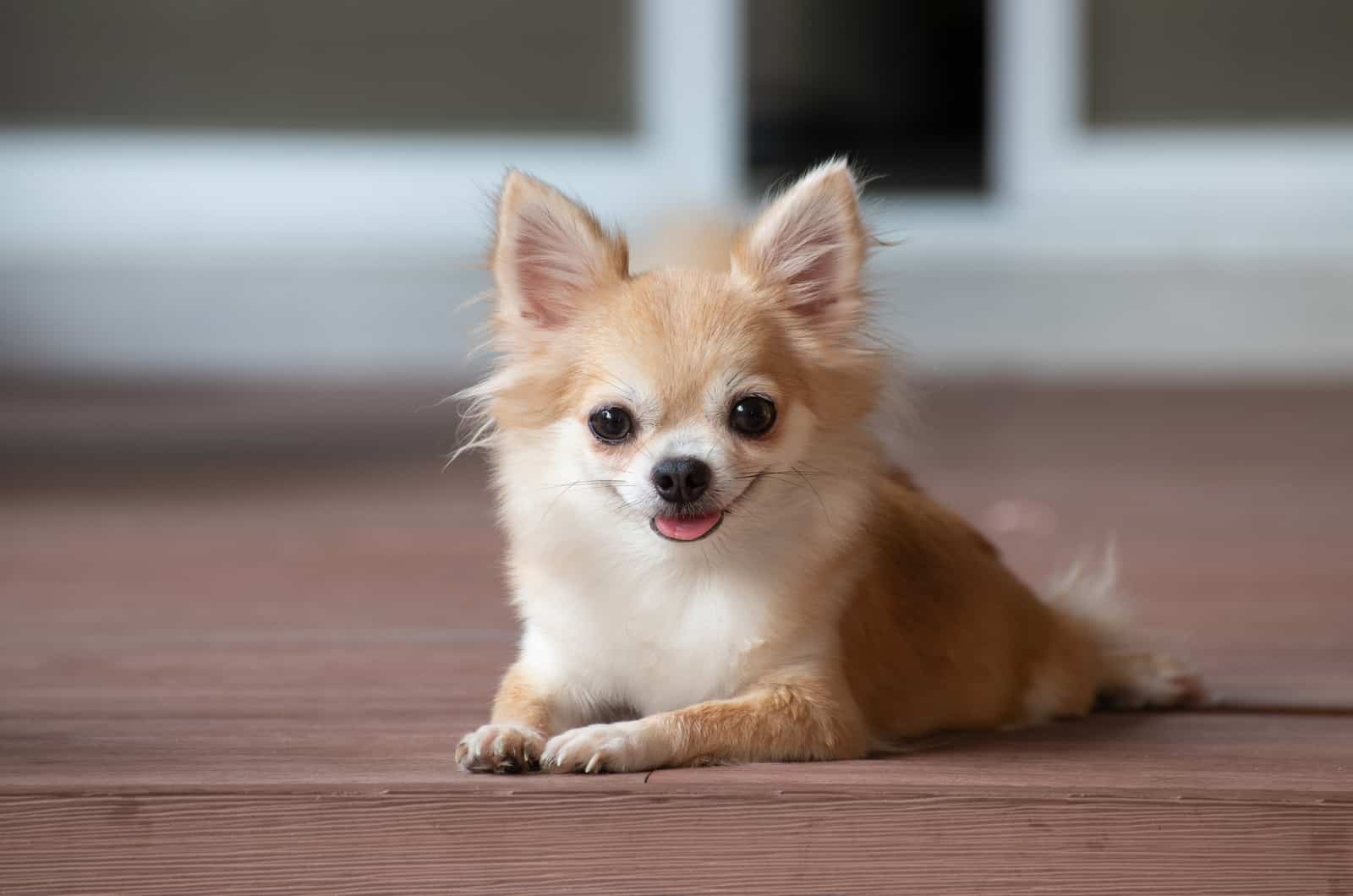
This is the one most of us imagine when talking about Chihuahuas. The rounded apple-shaped head is obviously the main distinguishing feature.
The skull shape is according to AKC standards and the absence or presence of molera is non-disqualifying.
A molera sounds harmless but it is a rather serious health problem in both Apple Head Chihuahuas and other types of Chihuahuas. This soft spot is characterized as a hole or gap in the fontanelle that closes as the dog reaches a certain age.
The hole, in most breeds, closes before the twelfth week of age, but in small dog breeds such as the miniature Dachshund and Chihuahua it is, more often than not, permanent and considered a breed standard.
Muzzles are shorter than in the other types and the eyes are protruded. The apple head Chihuahua’s skull can seem oddly large in comparison to the body. Leg length is also shorter than in other types when talking about body proportions.
Perhaps the clearest sign that a Chihuahua is apple-headed is the ninety degree angle that the muzzle and forehead connect at. This means that the forehead is slightly distended.
They are still considered one of several varieties of Chihuahuas and are not recognized by the American Kennel Club but you can still participate in dog shows.
2. Deer Head Chihuahua
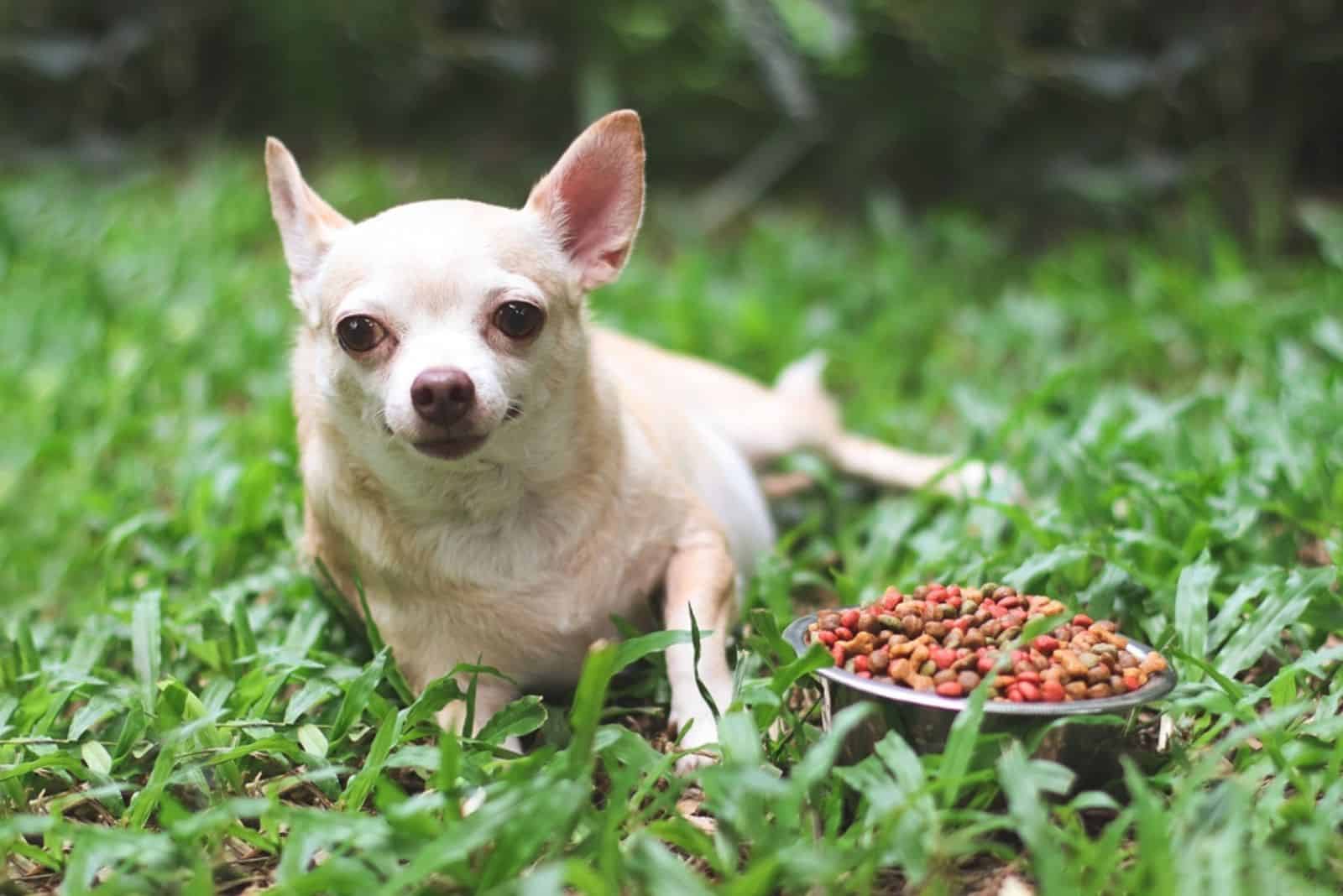
If you ever dreamed of a domesticated carriable deer, you will revel at the opportunity of getting a deer-headed Chihuahua.
Deer head Chihuahuas have more than just head shape as an element by which they can be discerned from the round head of the Apple-headed Chihuahua.
The muzzle is longer than the apple-head’s and connects with the forehead at an angle of approximately forty five degrees.
This means that there is no sudden change in head shape but a sloped transition between the two skull segments. The eyes do not protrude due to the elongated head shape, but the ears are larger than in the apple-headed. Moleras occur less frequently than in Apple-headed Chihuahuas.
The ear size can be similar or identical to other types of Chihuahuas but appear larger due to the slimmer muzzle and forehead profile.
Legs in a Deer-headed Chihuahua are frequently slightly longer than in the other types, and the neck can follow suit too. The longer legs make for an overall slimmer body frame that deviates from breed standards.
With deer-headed Chihuahuas, the standard established six pound weight limit is easily broken because they tend to weigh up to ten pounds. The deer look would not be complete without a fawn color. This is a common color in deer heads, but sabled fawns do happen from time to time.
3. Pear Head Chihuahua
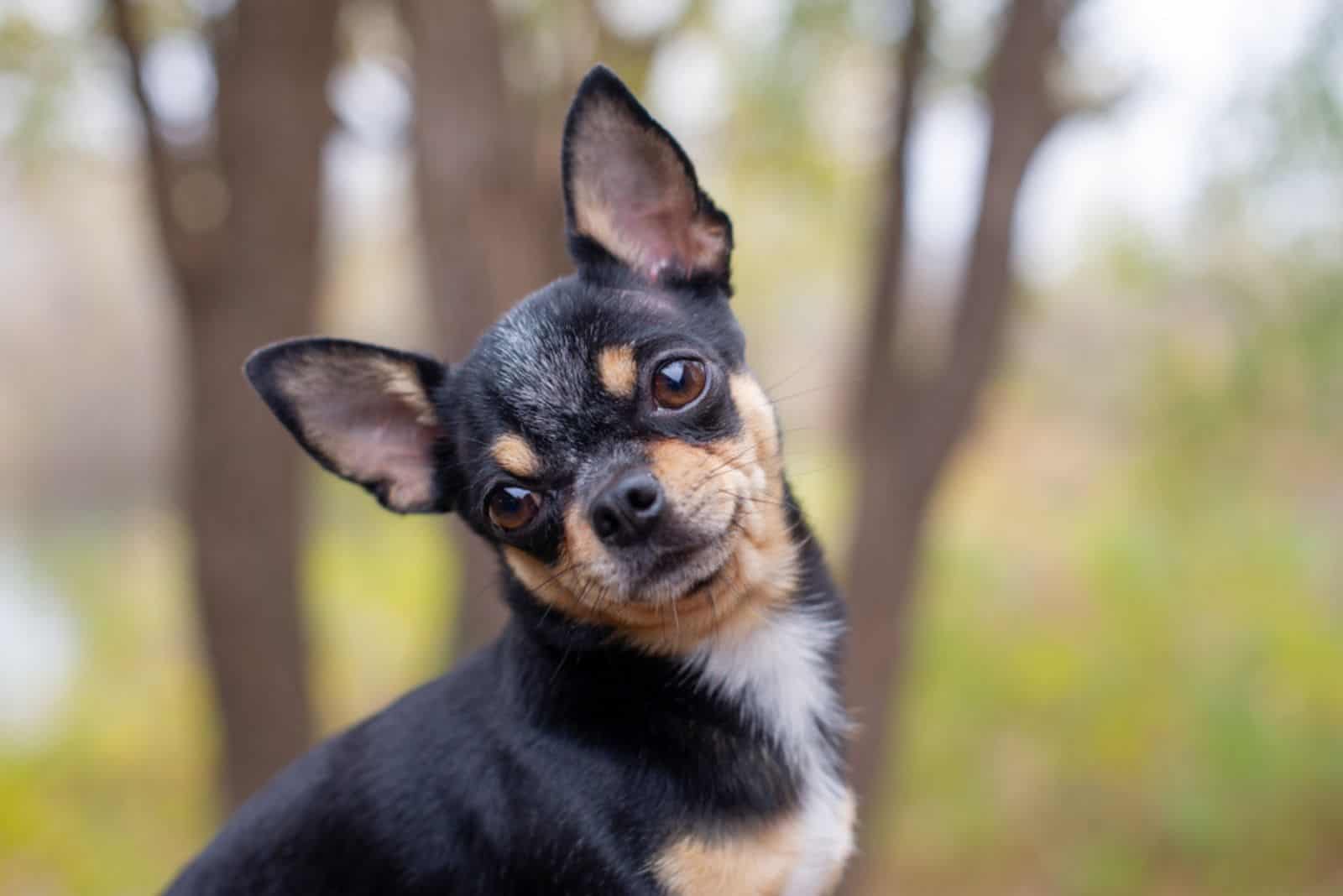
I promise we will be soon done with the fruit inspired naming conventions. Because the genetic heritage of these three types of Chihuahua is largely unknown, I cannot say how any of their features came to be.
The pear-shaped head is, allegedly, achieved by combining the apple-headed and deer-headed Chihuahua. A pear-headed Chihuahua will be somewhere in the middle in terms of physical features.
Head shape will be similar to a pear, with a rounded head and somewhat flat forehead that connects with the muzzle at an angle of approximately twenty degrees.
The muzzle itself is shorter than in the deer-headed but longer than the apple-head Chihuahua’s.
A pear head will be substantially larger and heavier than an apple or deer head Chihuahua. The difference in size is easily visible even in Chihuahua puppies.
Just like the deer-headed Chihuahua, pear heads cannot participate in show rings because they are not recognized by the AKC breed standards.
Unfortunately, the pear head Chihuahua cannot be bred ethically which means that breeders who claim exclusivity simply on its features and name are not oriented towards maintaining breed standards.
My recommendation is to avoid such breeders simply because the parents are usually not pedigreed. Without the proper registration and bloodline certificates there is no way of knowing if the dog is free of genetic diseases.
Since this is not a purebred Chihuahua, and the genesiology cannot be thoroughly traced back to a particular lineage, the breeders who sell this type of Chihuahua are not reliable.
4. Teacup Chihuahua
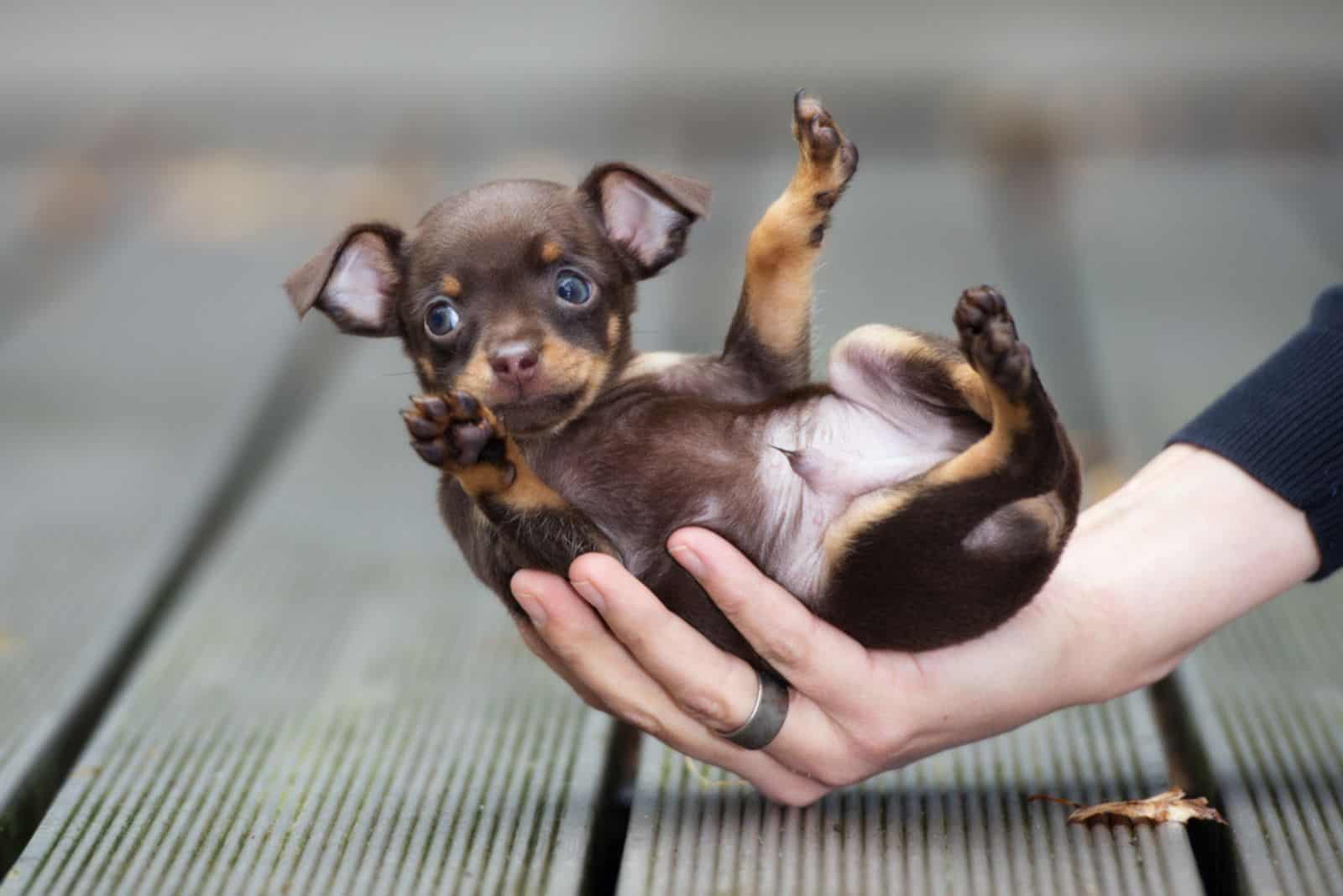
With a boom in teacup sized breeds, it was impossible to skip its implementation into the Chihuahua. A teacup chihuahua is significantly smaller than any other Chihuahua type.
There are no exclusive features that distinguish it from other types of Chihuahuas other than the unusually small stature and weight.
Producing this type of Chihuahua is accomplished by breeding only the smallest representatives of the breed. Since the teacup size is not as popular as an apple or deer-headed Chihuahua, the genetic pool is rather small and that implies inbreeding.
Oftentimes, the teacup Chihuahua is not considered a type of Chihuahua at all. The small size means that only the runts of a normal-sized Chihuahua litter were selected for breeding.
The average weight for teacup Chihuahuas is one that screams of health problems. There is no specified minimum weight requirement for Chihuahuas but an adult dog weighing one or two pounds will certainly have major issues.
The fragile skeletal structure and high probability of genetic diseases lying in wait make the teacup Chihuahua very frail. You will have to channel your inner surgeon to handle the dog properly.
Children and other dogs or pets bigger than the teacup can easily fatally injure it even if just playing. If you are set on getting one despite all of the downsides, you will have to dedicate a lot of your free time caring for it.
5. Short-Haired Chihuahua Or Smooth-Coat Chihuahua
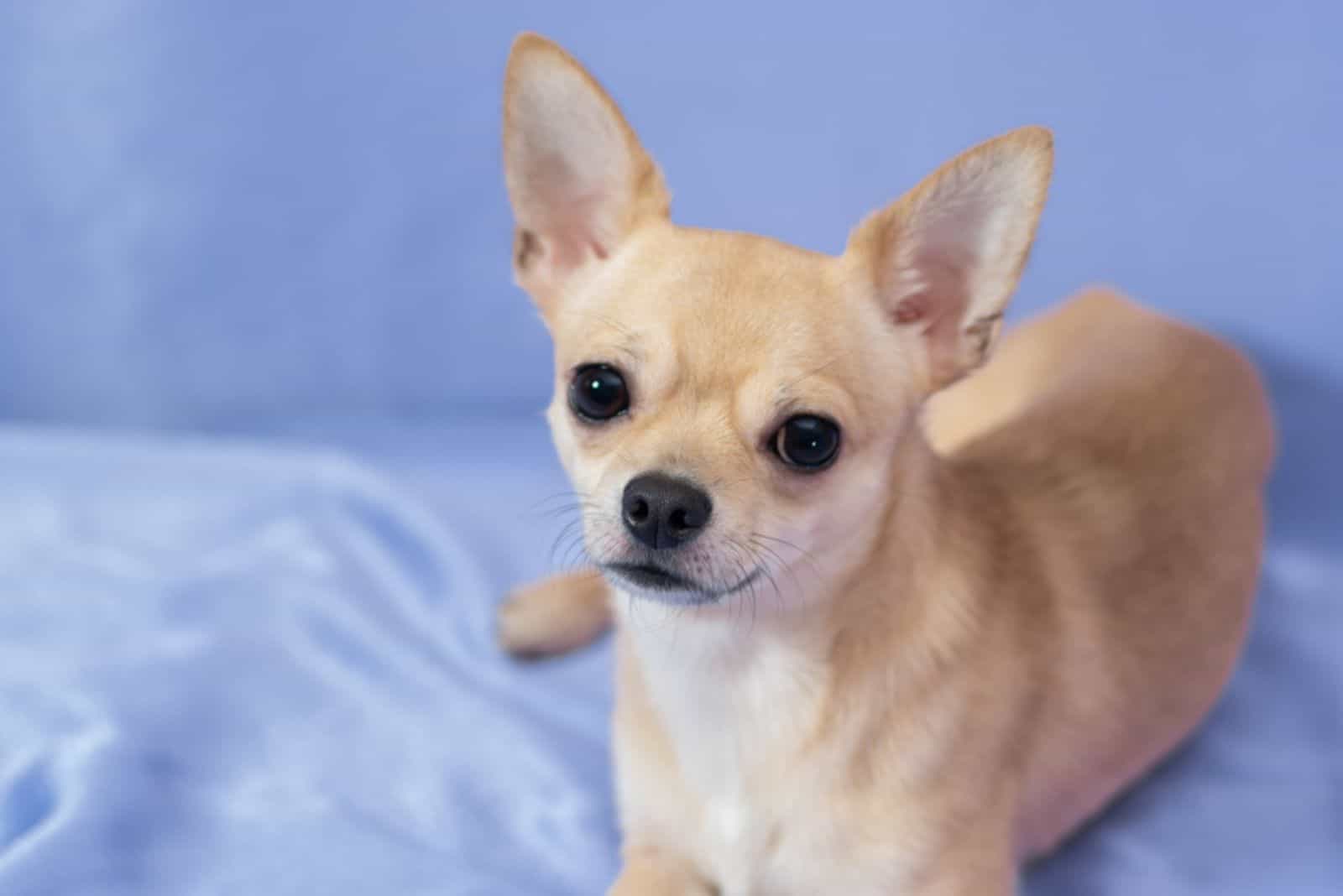
I left the AKC recognized subtypes of Chihuahua for last because they have all the right features for conformation events. A conformity event is a competition of who has the dog most representative of breed standards.
A short-haired Chihuahua should have the same physical features as the ones mentioned in the AKC breed standard section with a focus on coat quality and hair length. There should be less fur on the head and ears. A short coat’s neck fares better with judges if it has a decent amount of hair.
The tail should be lush with hair, while the overall coat quality needs to be soft, very snug to the skin with a rich shine. In case the coat is slightly thicker and has an undercoat, the chances of winning a conformation event are slimmer, but the dog will be able to participate.
Dewclaws are not a disqualification point, but removing them is preferred. According to the breed standard the chest should be refined to complement well developed and strong forequarters.
6. Long-Haired Chihuahua Or Long-Coat Chihuahua
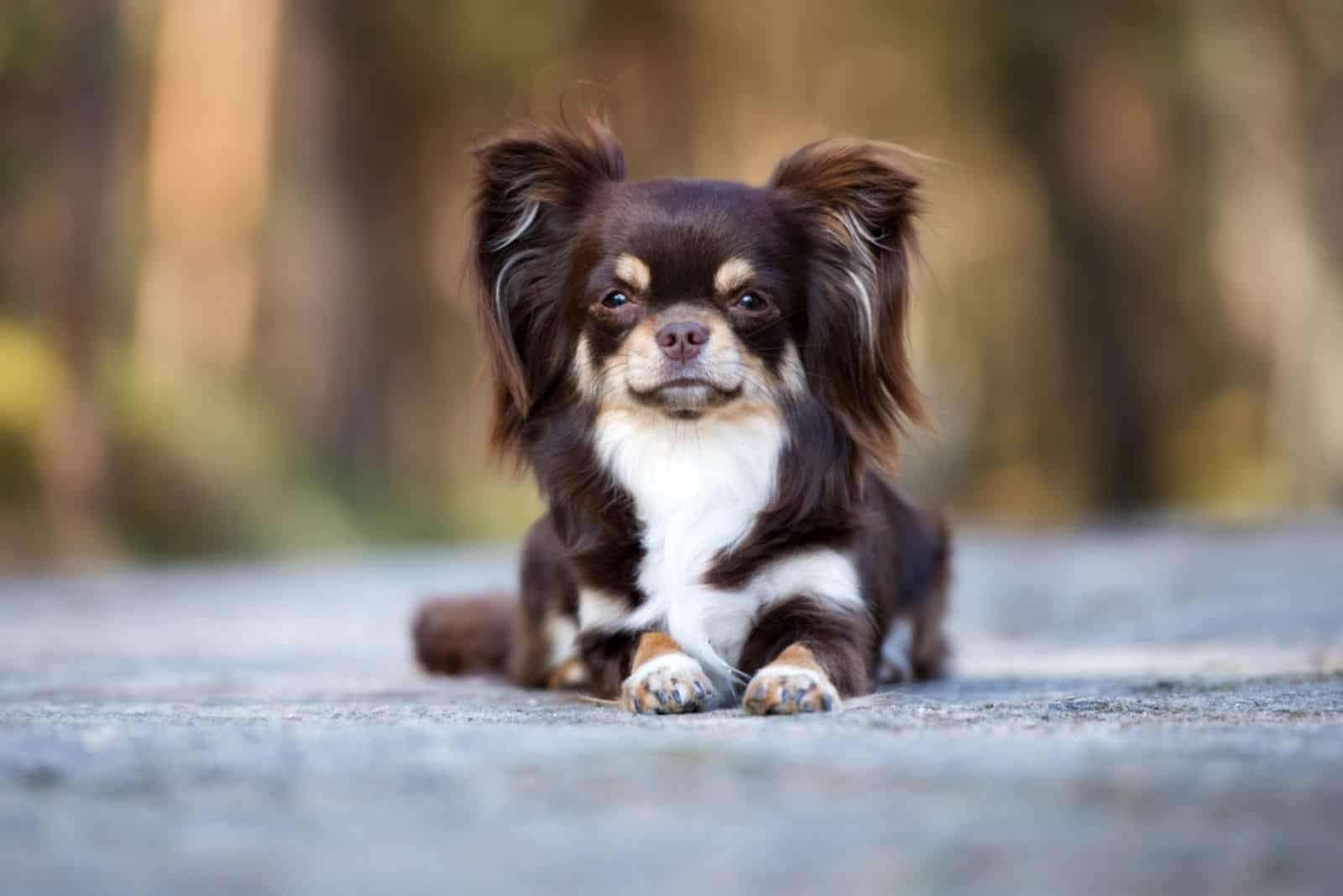
A long coat Chihuahua’s coat needs to be soft and completely level vertically without scant patches. Slightly wavy hair is allowed but extra points are awarded if there is an undercoat.
The ears should have a well defined edge that boasts hair (fringed), while the hair needs to be full and feathery with proper length.
Feet and legs should have the same ornamental properties as the tail. Hind legs are preferred with pants while the neck needs to have an even richer ruff than the one on smooth-coat Chihuahuas. Spots of scarce hair in a long-coat Chihuahua are grounds for disqualification.
Different Colors Are Not A Different Type Of Dog
Regardless of body type, head shape and size, a rare or different color in a Chihuahua does not make it a subtype. Merle and fawn Chihuahuas are simply little dogs with peculiar coat colors.
Just like a blue German shepherd is no different than an Isabella German shepherd, the many coat color options in Chihuahuas are simply a matter of pigmentation.
Merle is an incompletely dominant recessive gene and the fawn is a dilute of the red pigment in Chihuahuas.
Health Issues In All Types Of Chihuahuas
I am sure all of you dog lovers dread this part in advance. Small dog breeds are prone to some serious health conditions that require planning ahead. The cost for some of the treatment options is not negligible.
Their lifespan is great for a dog with more than a few health issues. An ideal scenario will see your Chihuahua compadre live anywhere between fourteen and sixteen years. Some live even close to twenty years of age. We applaud their commitment to being an exceptional company.
Hydrocephalus
This condition pertains to an abnormal amount of cerebrospinal fluid exerting pressure onto the brain. The pressure is also applied outwards, and it can cause the skull to become unnaturally enlarged.
Hydrocephalus can be congenital or acquired. Small dog breeds, especially those with short muzzles (brachycephalic) like Pugs, are genetically predisposed to have hydrocephalus at birth.
Acquired hydrocephalus can occur as a consequence of a tumor, injury-induced swelling or bacterial/viral infections. The principle is the same except for the genesis of the problem.
Unobstructed flow of the cerebrospinal fluid causes its buildup in the head. The expansion under the constant influx of CSF creates pressure that can cause brain damage or death.
Dental Disease
A study by the Royal Veterinary College has found that teeth problems are the most common medical issues affecting Chihuahuas.
Dental disease or periodontal disease is an infection of the gums and teeth. Gingivitis is the inflammation of gums that can progress into PD if left untreated. This condition advances very fast and spreads to the tooth pulp, nerves, root and even jaw bone.
Tartarus is the buildup of bacteria that feast on the remains of dog food around the teeth and gums. Once it gets under the tiny pockets of space between teeth and gum, it will eat away the enamel, dentin and pulp.
If not diagnosed and treated in time it can enter the bone and blood stream causing damage to internal organs such as the heart, kidney and brain. In many cases the symptoms are noticed too late and root canals and tooth removal is the only treatment.
Summary
No matter how many types of Chihuahuas exist, they are lovely little dogs that brighten any dark day. Being one of two dog breeds in the world most often abandoned by dog owners creates a situation where many of them are adopted as rescues.
Living in rough conditions and neglect, these loyal and protective dogs will give back more affection than many dogs five times their size. In my eyes, there is no better or worse type of Chihuahua.
Humans love playing the creation game with dog genetics, and sometimes the experiments are not a resounding success. This does not mean you have to avoid a Chihuahua with congenital issues, but your right is to know what to expect before deciding.
Let us hope that deer-headed Chihuahuas can be recognized by kennel clubs and push for ethical breeding despite the diversity.
Viva el Chihuahua!
